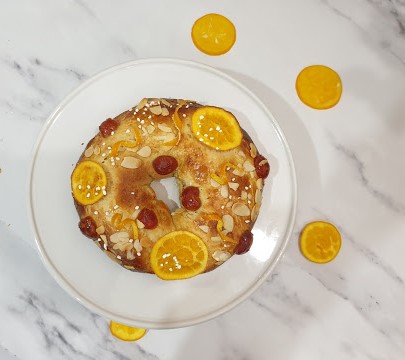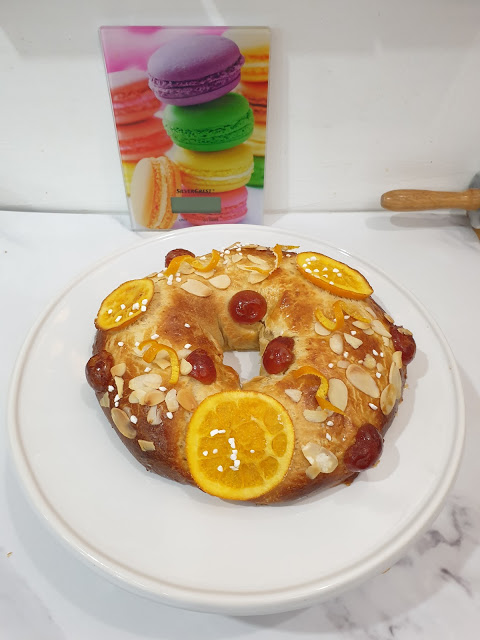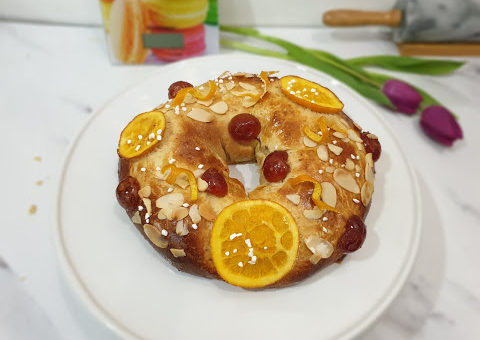A roscón de reyes is the bread-like cake eaten to celebrate Epiphany in Spain. Yes, I know I’m a little late, but it’s hard to keep up with all my baking and have had to freeze countless potions of yule log, birthday cake, brownies and more just so I can crack on with my long list of bakes!
The 6th January is when gifts are traditionally exchanged in Spain. Children and adults alike clean their shoes on the eve of Epiphany and place them by the fireplace. The next morning, presents miraculously appear beside them.
Spanish kings cake is made of enriched dough, similar to brioche. The crown shape and candied fruit decoration represent the bejewelled crowns of the three kings. A ceramic toy is usually hidden inside, for one lucky punter to find.
Baking
It is a sweet bread, made even more so by the candied fruit, and best eaten fresh on the day, or the day after. My particular recipe calls for you to make a starter the night before and to infuse the milk with orange and cinnamon, making it a lengthier recipe than some.
The major issue with baking was getting hold of the candied fruit toppings. Glacé cherries are easy enough to find, but anything more exotic is hard to come by in the UK. I ended up candying my own orange slices and peel for decoration. This, together with the sliced almonds and pearl sugar, resulted in enough jewels on the crown. I did, after all, halve the recipe to make a lockdown-friendly version!

Translation
A ‘rosca’ can refer to a doughnut or a ring, with the ‘ón’ suffix meaning large. This would make it a large ring-shaped cake. I dabbled with keeping the name in Spanish but instead enjoyed the more descriptive English version of “Spanish Kings cake”. You know who it’s by and what it’s for. Simple.
I did feel a slight unease at calling it a cake, when the texture is more like a bread, but as it is sweet and enjoyed as a dessert (sometimes they come filled with cream), I figured it was fair game.
The recipe uses ‘almendras’ to decorate, which actually refers to sliced or flaked almonds, as opposed to whole ones.
The dough is flavoured with agua de azar, orange blossom water. This is a new ingredient to me and one which is tricky to source in the UK. Orange extract is widely available, but there is a subtle difference between the two. Orange blossom water is distilled fresh bitter-orange blossom, whereas orange extract is made from the fruit itself. The former has a more delicate, complex flavour.
After leaving the dough to prove for two hours, you are instructed to ‘desglasar y bolear’. From the context this obviously means to knock back and shape into a ball, but I haven’t come across these words before. ‘Desglasar’ is likely a typo of ‘desgasear’, i.e. to remove the gas, hence the knocking back. ‘Bolear’ can mean all range of things from to get along with, to throw, become confused… However here it is taking ‘bola’ meaning ball and turning it into a verb.

Overall it was not a difficult bake and resulted in a worthwhile treat. I might double the key flavours next time (rum, lemon zest and orange extract) as they didn’t come through as much as I expected.
Last time I wrote about making challah, another enriched dough, which was less sweet and more for enjoying as a mealtime accompaniment.



